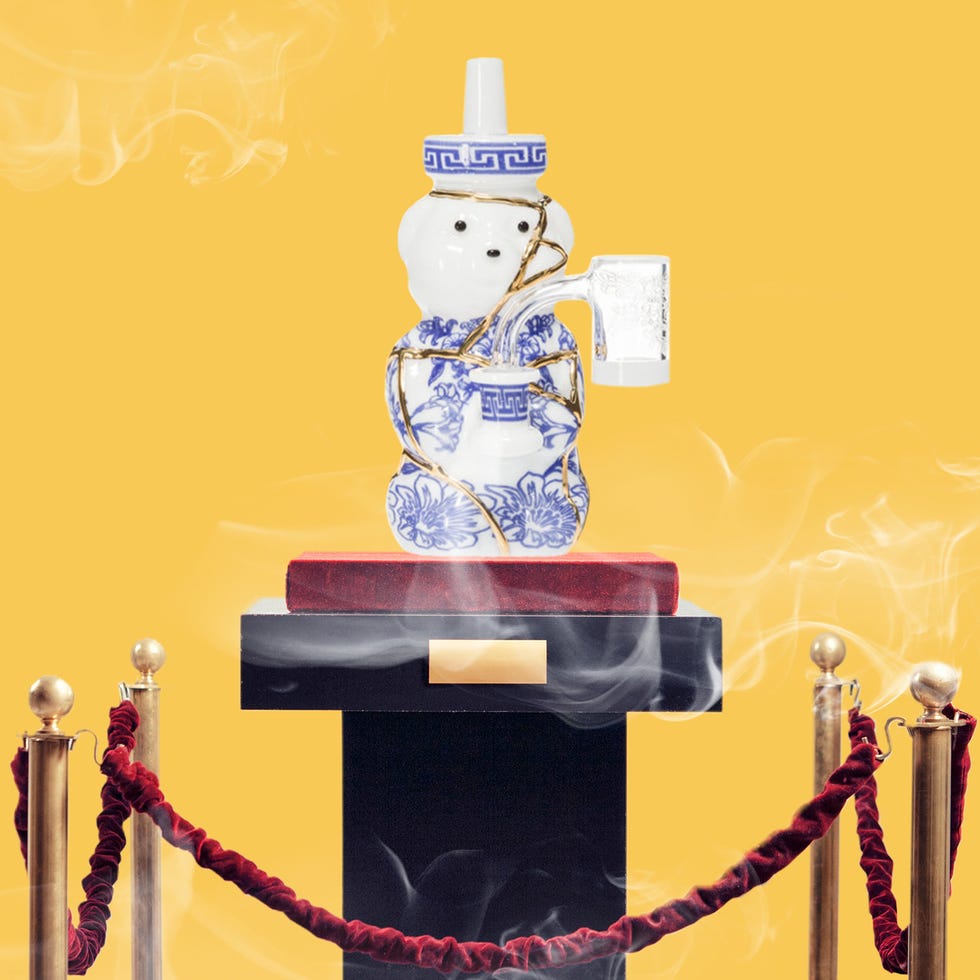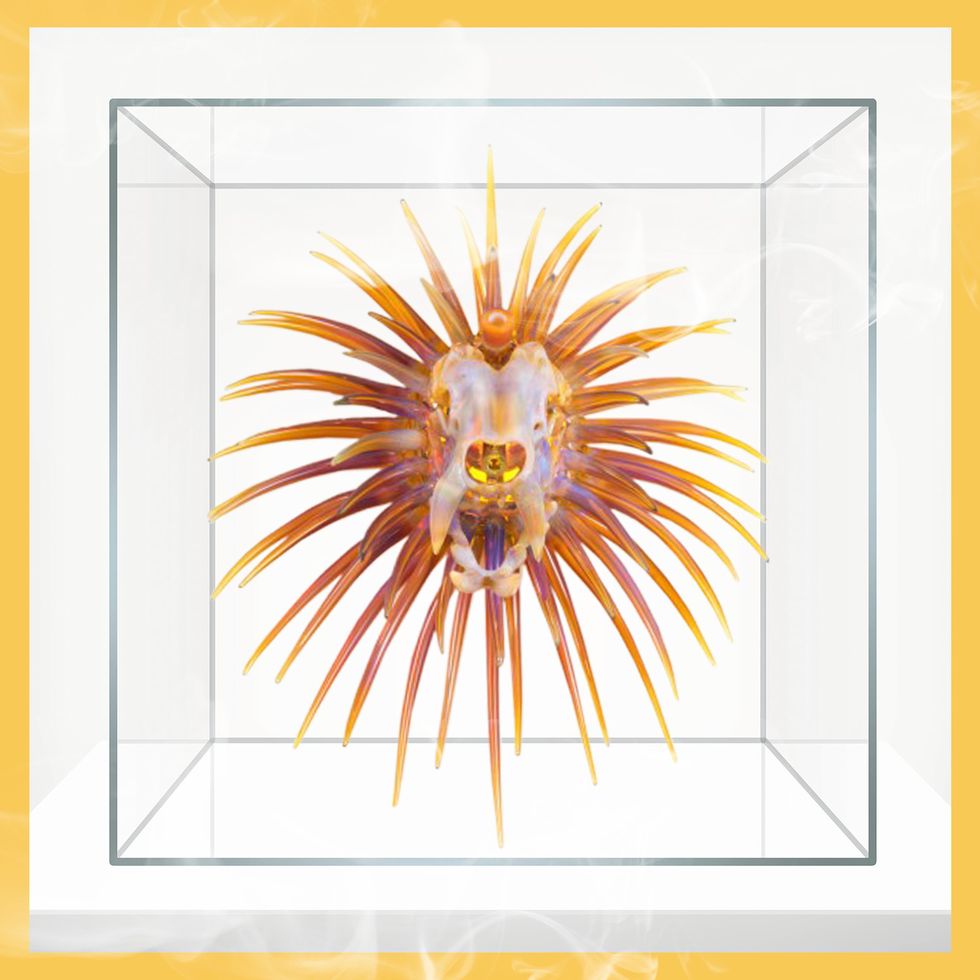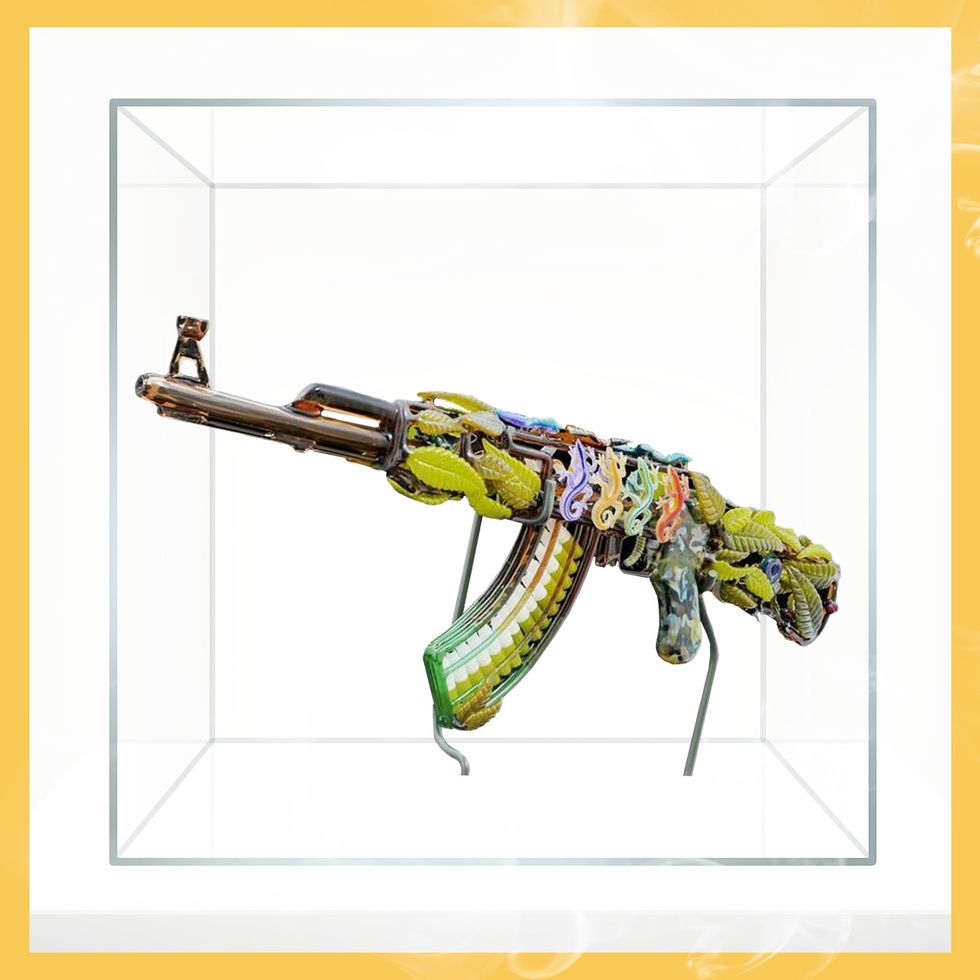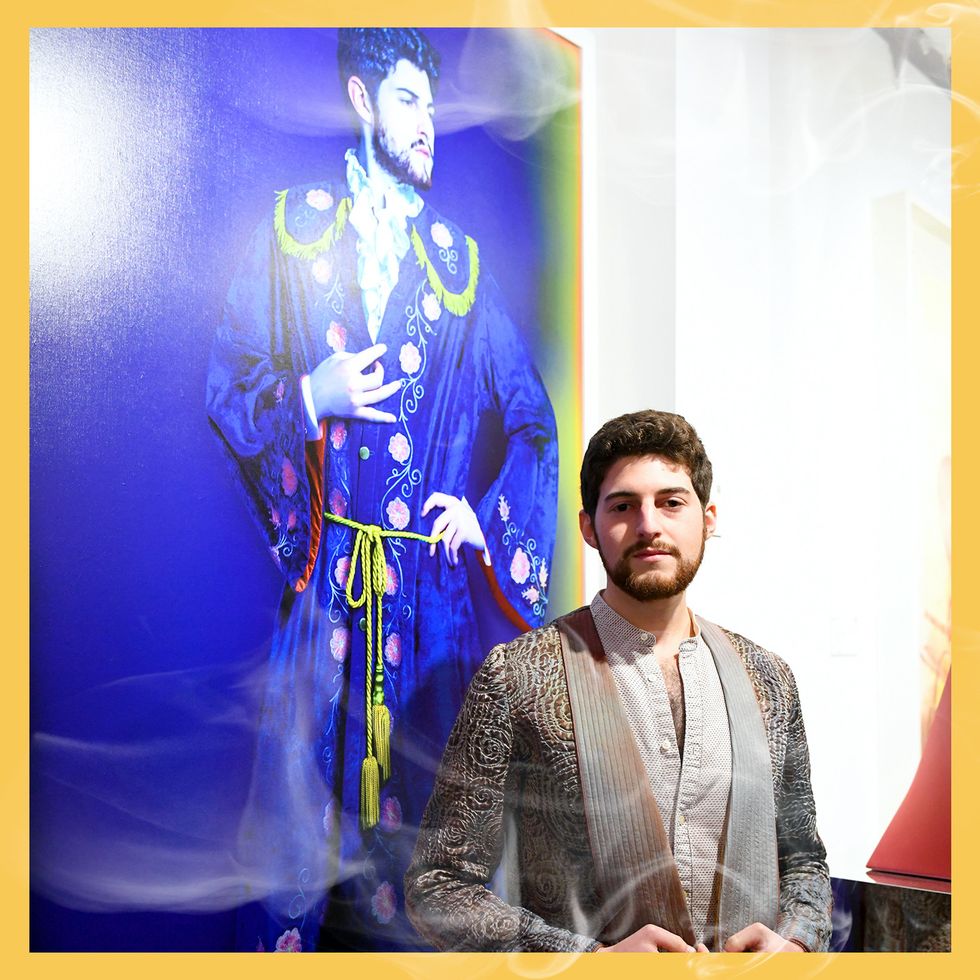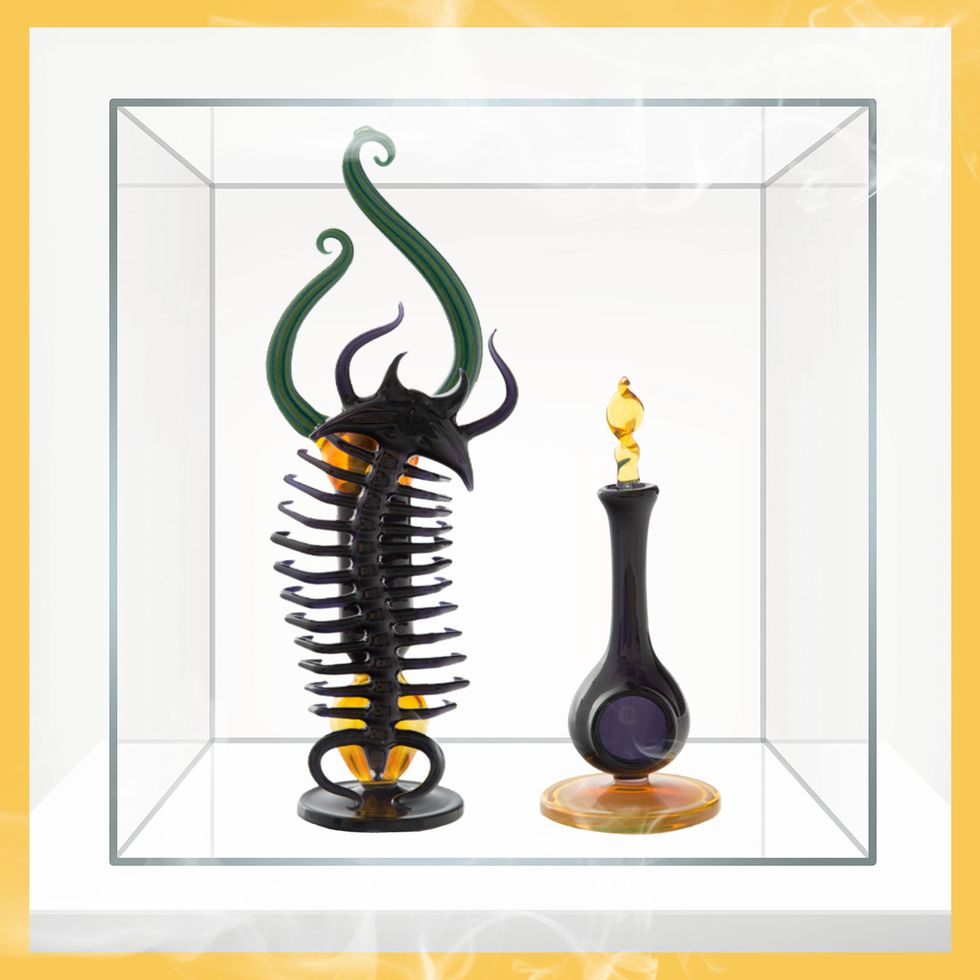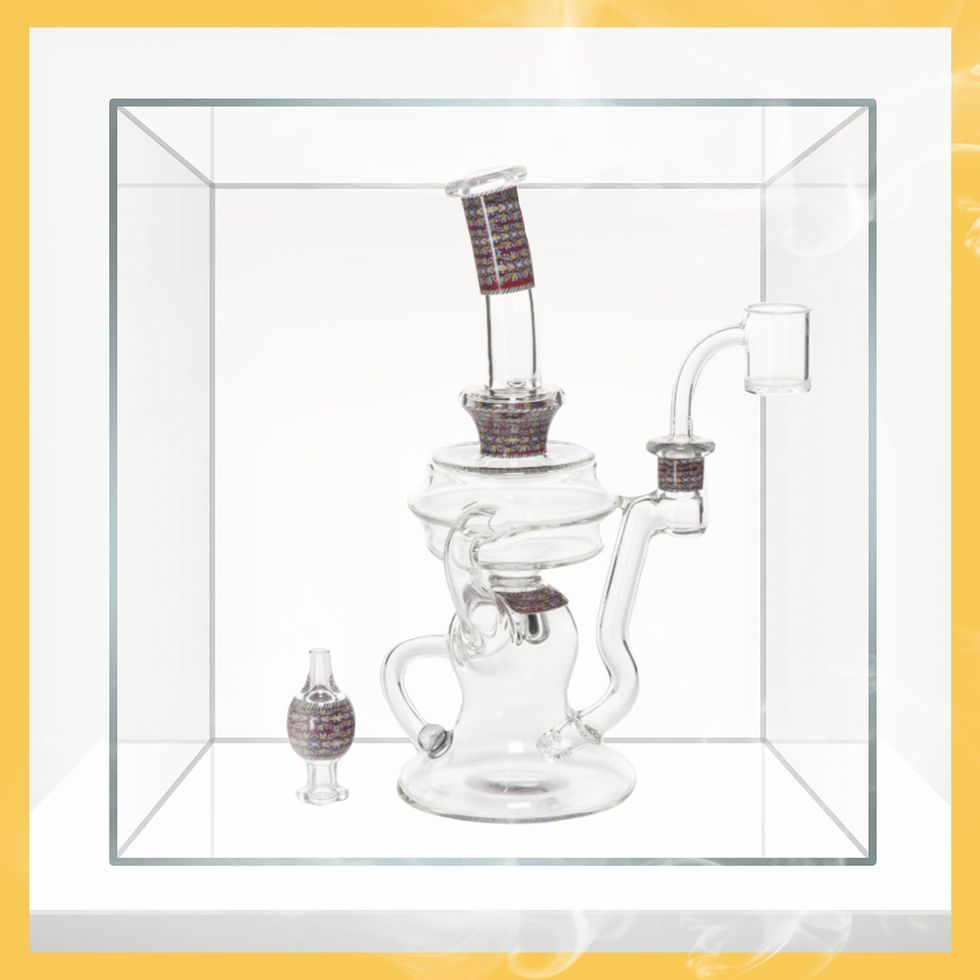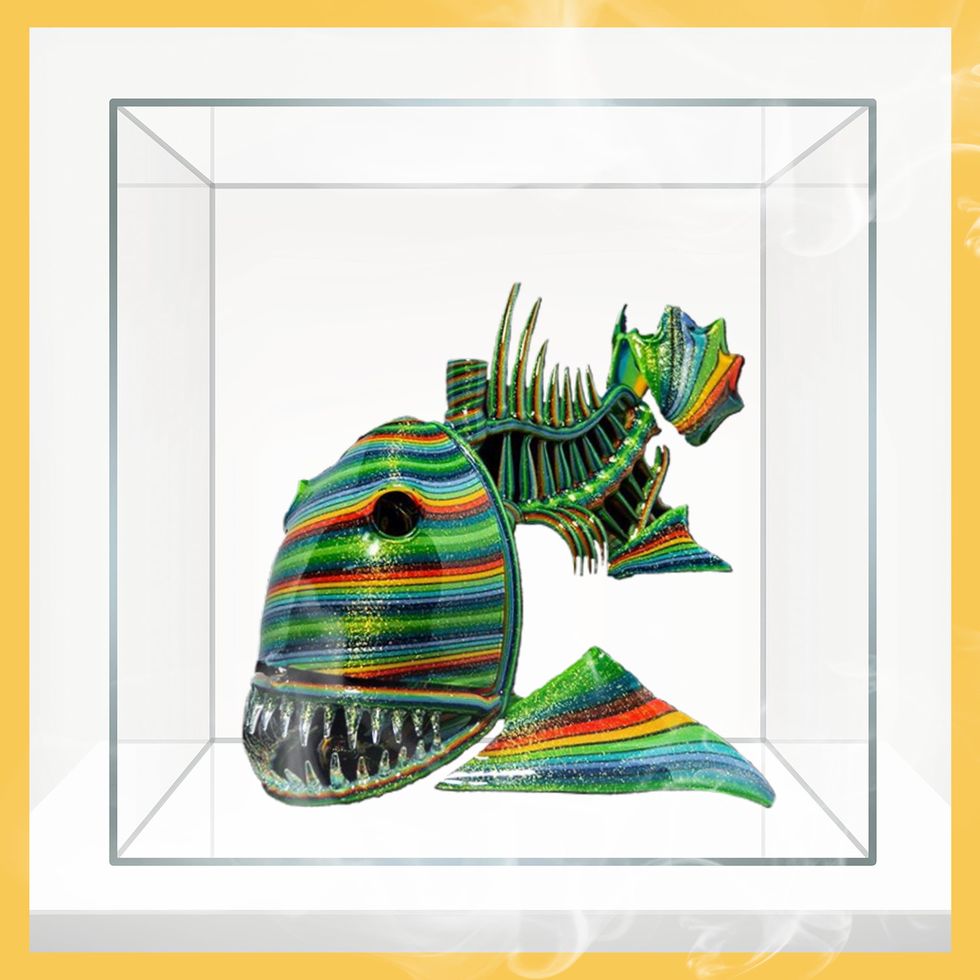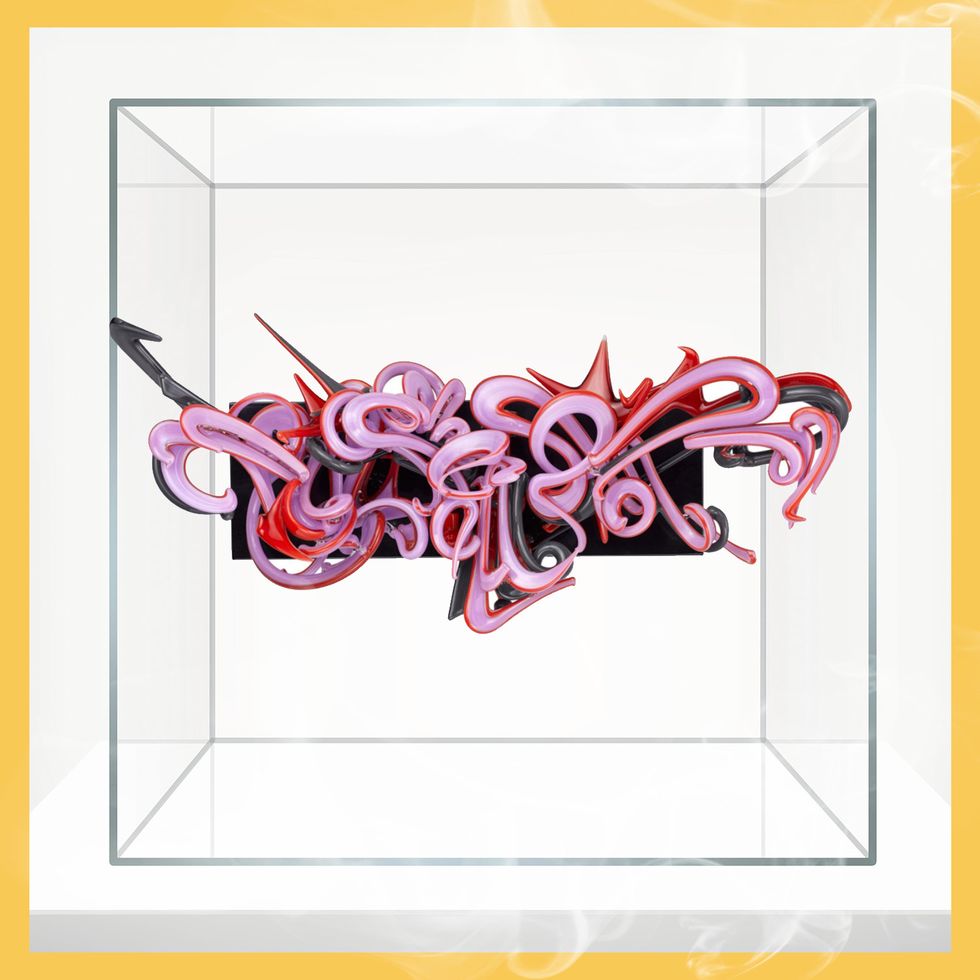Tommy Chong, the hairier part of pot-blazing duo Cheech and Chong, was once greeted via the feds one morning in 2003, weapons drawn as they stormed his area. He was once quickly charged with promoting bongs and marijuana pipes, which were dispensed on-line via his circle of relatives’s corporate, Great Goals Enterprises. This was once unlawful, certain. However the 9 months Chong served in jail, plus financial punishments, have been broadly thought to be beautiful fucking over-the-top throughout the trade. It looked like the feds have been looking to make an instance of the comic for creating a mockery of drug rules in The united states. In conjunction with Chong, greater than 50 others have been focused for promoting glass pipes at head stores or distributing them on-line. “Other folks promoting drug paraphernalia are in essence no other than drug sellers,” mentioned a DEA administrator on the time.
Operation Pipe Goals, because it was once referred to as, was once a caution to the hashish global that during 2003, the federal government believed the whole thing they did was once grimy, illicit, and incorrect.
So much has modified since then. Technically, it’s nonetheless unlawful to promote drug paraphernalia like bongs within the eyes of the government. However enforcement of that legislation is just about non-existent in maximum puts, and head stores masquerade in the back of indicators that say their merchandise are “for tobacco use simplest.” Hashish is all over, for everybody, if you’ll stroll a felony line. However the bong itself nonetheless turns out sketchy as hell, a reminder of dumb stoner films and hiding the stench of weed out of your dorm’s RA. It’s an artifact of a bygone generation that’s roughly long gone up in smoke.
No longer those bongs, regardless that. On Monday, July 22, 3 of probably the most intense bongs you’ve ever observed will pass up for public sale at Heritage Auctions in Chicago—the primary public, fantastic artwork public sale of bongs to ever happen in The united states, on the third-largest public sale area on this planet. Melding intellectual artistry with lowbrow tradition, they’re a part of a small circle of relatives of astonishing glass bongs that promote for hundreds, or even loads of hundreds of greenbacks to somebody who desires to shop for a work they’d be proud to show at the mantle. They paintings, too.
Bongs don’t have the sleekness of vapes, the most up to date issues in hashish intake at the moment. They get you excessive, speedy and easy—dangerous style, grimy stem, and all. Everybody has a bong tale: the primary time they took a success off one and noticed the celebs dance, that one Roor bong their highschool good friend purchased at the down-low, that incident with the mucked-up percolator. And each and every is a mirrored image of its proprietor, whether or not it’s a hollowed-out apple core, a Pepsi bottle with strategic holes in it, or a towering piece of glasswork detailed with smoky swirls. Even supposing the feds gained’t come pounding on somebody’s door for creating a bong (more than likely), they nonetheless signify one thing underground. They protest everybody who protested marijuana.
And now, on this new age of legalization, they’re revered, bankable artwork.
In September 2017, a tender guy named Benjamin Milstein displayed 25 fancy bongs on the Chateau Marmont in Hollywood from his private assortment, the place they grabbed the eye of celebrities, artists, and newshounds. Those bongs have been surprising—intricate items of glassware formed into, in a single case, an AK-47 coated in leaves and grubs. (That one was once referred to as “Mom Nature’s Gun.”) Every other piece confirmed a voluptuous alien enjoyable on a web of glass piping; when in use, smoke stuffed the alien’s frame. “Vahana,” as this paintings was once referred to as, was once very trippy certainly. It value $300,000.
The artwork show off showcased loads of hundreds of greenbacks in bongs, accumulated via Milstein after he cashed in giant on some hashish inventory in 2013 when he was once 17, simply as hashish was once turning into felony in Colorado. With cash in pocket and an pastime within the hashish trade, he discovered his method into a global of educated artists who had devoted their time to creating bongs, or “purposeful glass artwork” to these with extra creative sensibilities, that have been outstanding—a resurgence of the trade after Operation Pipe Goals had shuttered it. A few of them offered in head stores for hundreds or at the street with, who else, the Thankful Lifeless, anywhere the felony line might be toed. Others have been exchanged by way of social media interactions or at personal displays, out of the general public eye. Milstein was once younger, searching to possess one thing of his personal, and this are compatible the invoice. He sought after to accumulate a choice of bongs from the most efficient artists he may to find and provide them to the remainder of the arena.
“As a result of this trade was once extremely stigmatized, and in point of fact as it was once unlawful and it is nonetheless in point of fact in a gray area…it was once in point of fact laborious to search out [the artists],” he says. “All of them had pseudonyms, first off. After which a few of them stay their pseudonyms now, simply because it began in a spot the place you needed to be in point of fact cautious about who you instructed about your paintings.”
He tracked them down, around the nation or even into Japan, getting pointers from the artists he visited as to the place he may discover extra artists. He additionally spoke publicly, accumulated items, or even began a touring artwork gallery referred to as Gray Area Artwork (get it?) to exhibit the works; the Chateau Marmont show off was once a Gray Area manufacturing. He mainly made himself into the whiz child of top-end bong artwork.
“The theory was once, every time I noticed a terrific bong from an artist, I closed my eyes. I would say, ‘Is that this piece gorgeous sufficient, in my thoughts, to in 10-to-Two decades be on a pedestal someplace with anyone with white gloves sporting it to an public sale block?’” he says.
It seems that, loads are compatible the invoice. Milstein, who was once named to Forbes’ “30 Underneath 30” checklist in 2018, has a suite that numbers some 250 bongs, price greater than one million greenbacks. And at the moment, he’s now not even doing a lot to resell the items in it. He calls himself an suggest for the trade on a undertaking to unfold the nice phrase about bong artwork, even spending final summer time writing a coming near near thesis about it on the College of Cambridge, as a result of nobody had executed it prior to.
Now, he’s were given his white glove public sale, too, during which 3 items, together with a big trilobite fossil-shaped bong from his assortment made via artists Dollar and Darby Holm, can be publicly bid on via somebody who can acknowledge excellent worth after they smoke with it. This weekend, whilst on-line bids are open however prior to the public sale is going are living, all 3 can be displayed at Heritage’s sales space at ComplexCon in Chicago for the general public to gawk at. It’s probably the most competitive step purposeful glass artwork has taken into the tightly patrolled artwork global but.
About those artwork bongs. They’re made with borosilicate glass—as are different, much less radical bongs, in addition to laboratory gear like graduated cylinders and microwave-safe glass bowls—as it gained’t damage below excessive warmth duress. Their worth is judged via hours labored and method, however essentially, via artist identify popularity. Capability is much less prized, even supposing these types of bongs are meant to be smoke-able. (If you need an concept of the way tough glass blowing is, watch a couple of mins of Netflix’s new festival display Blown Away.)
Each and every bong artist, the vast majority being males, has their very own aesthetic. Artist Zach Jorgenson crafted a katana bong, upon which he used the millefiori glass-working strategy to imprint Van Gogh’s “Starry Evening.” Quave, whose technical prowess places him on the peak of the artwork bong sport, invented Klein recycler bongs that ship water and vapor again in the course of the piece to be reused. Dollar does bones, as in terrifying T-Rex fossils, spiny fish skeletons, or even a golden-maned tribute to Cecil the Lion, long gone too quickly.
Bob Snodgrass made it giant within the ‘80s via promoting his items to Deadheads alongside the excursion direction for the band and is most likely probably the most mythical of those glassblowers. His bubbly, cloudy pipes, oftentimes shaped to appear to be melting skulls, are made via fuming gold into the glass.
In all, Milstein estimates there are about 20 of those elite glassblowers promoting their stuff for greater than $25,000.
The primary glass pipe artist Kurt B ever noticed was once a Snodgrass unique. No less than, that was once the tale; it might were a knock-off. His pals had bought it from a Thankful Lifeless display within the mid-’90s. By way of the tip of the last decade, Kurt had graduated highschool, amassed some gear, and taught himself to paintings flame to soften glass. He lived within the again place of business of a head store in Vermont, and used its studio as a workshop. After the flip of the millennium, he was once supporting himself financially via promoting his pipes. When the feds cracked down in ‘03, he wasn’t a goal.
“For me, it was once by no means concerning the cash or by no means was once in point of fact a occupation selection,” he says. “It was once like a pastime that was a way of life, and perhaps I’m going to make a greenback right here or there and stay myself calm, you realize? However yeah, I did not undergo an excessive amount of from the ones occasions, however folks had. They went to prison.”
Someday after the pastime was a occupation, the occupation was an artform. For many of this decade, Kurt’s paintings has been as broadly referred to as a bong maker’s paintings may also be—particularly, his Honey Undergo sequence, which replicates the bear-shaped honey bottle your mother stored within the cabinet.
“They have been made to appear to be the makeshift plastic honey undergo bong that each adolescent child made after they have been looking to make a bong and seemed of their kitchen covers for the coolest-looking bottle,” he says.
Kurt made 100 in general, dated and signed them in order that they couldn’t be ripped off or industrially produced, after which broke the mould. However now, he’s made his first solo undergo since finishing the sequence, honey undergo quantity 101, for the approaching public sale: the “Kintsugi Honey Undergo.” Kintsugi is a Eastern technique of taking damaged porcelain and mending it again at the side of gold, and his undergo seems like that—blue and white china porcelain damaged and reformed into a beautiful little undergo with gold seams. Milstein in fact recommended the kintsugi component for the undergo, after seeing Kurt’s earlier experimentation with imitating porcelain.
“I want I had some in point of fact prolific reasoning, just like the damaged courting between the U.S. and China and the honey business,” says Kurt B concerning the kintsugi honey undergo’s backstory. “I do not in point of fact… I may make one thing up. However the fact of it’s, I used to be making the blue and white china, and it was once via development, I did the kintsugi.”
It took him a month—i.e. “method too fucking lengthy”—to complete it, working out tips on how to flip borosilicate glass into one thing that gave the impression of fantastic china, damaged and rebuilt to be simply as, or extra, gorgeous.
Even supposing the bidding for his kintsugi undergo is estimated to hit as excessive as $12,000, Kurt nonetheless sees it as natural craft.
“I by no means in point of fact even checked out this as an artwork. I imply, I suppose it’s an artwork,” he says. “I have at all times more or less checked out myself as a craftsmen-type man, a man that simply make stuff. There is no doubt been items that I have made pre-recognition that have been conceptual and individually, that I used to be making them as an artwork piece. However total, I simply at all times noticed myself as a craftsman.”
Milstein is extra effusive.
“The good section about this medium is that those artists are in point of fact doing issues with glass that nobody has ever executed prior to,” he says.
And there have an interest consumers.
When hashish hit its first spherical of legalization, a large number of folks made some huge cash speedy, similar to Milstein. They sought after to take a position it in one thing, like a tender celebrity would possibly put their cash right into a Maserati. Smokable bong artwork was once a perfect possibility. The most important marketplace for purposeful glass artwork remains to be the hashish trade, even supposing different consumers come with Motion Bronson, skilled athletes, and track trade gamers.
Milstein hopes the Heritage public sale will get those bongs to the folks outdoor of the ones industries—extra advocacy paintings. Its curator, Ronnie Pirovino, concurs. A hashish person himself, Pirovino admires how they mix glass sculpting with a extra experiential aspect—the “ritualistic match” this is breathing in from and passing a bong, he says. He curated 150 items—like Banksy’s early “Impolite Copper” print, a luxurious flower ball from Takashi Murakami, and KAWS x Preferrred skate decks—below the name “Disruption,” and in addition reached out to Milstein, whose Gray Area gallery he’d observed all through Artwork Basel in Miami, to incorporate some bongs, too.
Milstein talked to Kurt B concerning the Kintsugi Honey Undergo and contributed the Dollar/Darby Holm “Trilobite King” (estimated to move for no less than $8k), and Quave made a brand new, endless Klein-bottle bong referred to as “Neo-Pibo” (estimated to move for $40-to-60k) for the public sale. Pirovino calls items like those “any such previous few artwork paperwork” that hasn’t but gained its due consideration, and attracts comparisons to different city artwork.
“The city artwork motion has pop out of a rebellious spirit,” he says. “It’s pop out of a fuck you form of mentality the place artists have determined that the gallery machine, the mainstream artwork global, isn’t the pass judgement on that they need to be judged via. They would like the general public to pass judgement on their paintings.”
However the mainstream artwork global is beginning to take an pastime, albeit modestly. The Nationwide Liberty Museum in Philly showcased a choice of bongs in 2017. At this time, a purposeful glass piece (an untitled paintings via artist David Colton) is on show off on the Corning Museum of Glass in upstate New York—curator Susie Silbert, who has been following this box for Two decades, calls the paintings “extremely subtle.”
“We’re searching at it now not simply as a interest of glass-making, however as a significant contributor to this subject matter and the way in which that it’s utilized in recent tradition and manufacturing,” she says. She believes an public sale like Heritage’s is a “important building within the box,” striking it in entrance of the viewing public, the place it may be approached as artwork, now not as one thing illicit.
Kurt B hopes it attracts in non-cannabis trade people, however he stays wary concerning the public sale’s possible.
“I am glad about it,” he says. “I’m simply additionally more or less hesitant [to say] it is gonna exchange the arena or exchange our careers or anything else like that.”
Milstein, alternatively, sees previous the public sale area to the pristine halls of The united states’s artwork museums.
“Artwork’s in point of fact at all times protest, and that is an very important tale to inform in American historical past,” he says. “Legalization of hashish, the communities surrounding it—this artwork is in point of fact the beacon that sheds mild on all of that. After which outdoor of that, from a craft point of view, these things is in point of fact breathtaking. And so dually, it merits to be in museums.”
Silbert, for her section, hopes the Colton pipe is the “first of many pipes to come back” on the Corning Museum of Glass.
Pirovino calls this artwork “disruptive.” Milstein has a tendency to make use of the phrase “subversive” to explain it. Kurt says it is “taboo,” American folks artwork that’s at the “cusp of the black marketplace.”
The truth is, nobody is getting arrested for this, now not anymore. It would lurk in the ones darkish geographical regions, making oldsters and Republicans deeply uncomfortable via reeking so blatantly of pot tradition. It’s excellent outdated Americana protest artwork, however what’s it protesting, precisely? The folks campaigning towards marijuana are dropping their preventing flooring. So perhaps, now, it’s preventing for the suitable to drop hundreds on official artwork from which to smoke weed that, if you are fortunate, you gained’t be punished for possessing.
The older, dirtier bong may well be disappearing, however every other more or less bong may emerge: the blank, high-class, conceptually astounding bong. It wouldn’t be an artifact of stoner years long gone via, however a trophy of its time, worthy of the high-caliber hashish individuals are legally rising at the moment, destined for artwork galleries and museum cabinets.
It will beat vaping.



